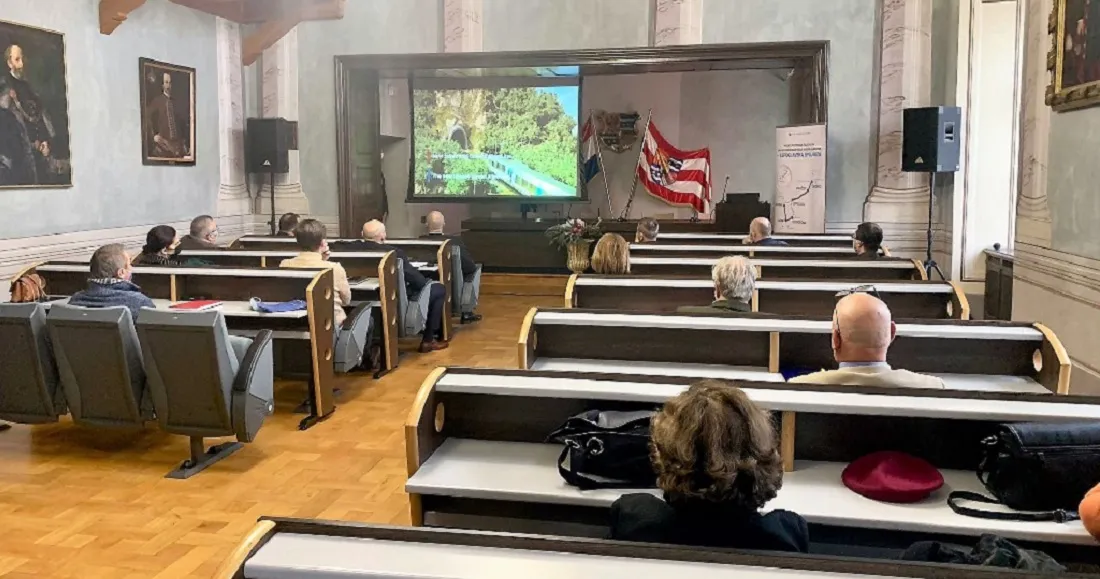This Thursday, the Feasibility Study for the project of building and reconstructing the railway between Čakovec and Zagreb, known as the Lepoglava Coupling, was presented at the Varaždin County Palace. The key document determined the variant solution for the route and calculated the costs and benefits of the project.
Croatian Railways Infrastructure presented a new Feasibility Study at a conference on Thursday, December 9 in Varaždin. The Study analysed the option of building and reconstructing the Čakovec-Varaždin-Zabok-Zagreb railway. Even before the study was completed, it was well known that the newly built 20 km section of railway would start in Lepoglava. Hence, the project is known to the public as the Lepoglava Coupling.
The conference in the Varaždin County Palace was hosted by the prefect Anđelko Stričak. The presentation delivered by project manager Marko Car was attended by Krapina-Zagorje County Prefect Željko Kolar, Međimurje County Representative Ivica Rus, Krapina Mayor Zoran Gregurović and representatives of Varaždin, Čakovec and Ivanec. The professional public was represented by the Head of the Sector for Railway Infrastructure of the Ministry of Transport, Milan Vuković, experts involved in drafting the document, and other guests.
The authors of the study from the firms ŽPD, Granova, IGH Institute and Rijekaprojekt determined the optimal variant for the route, 92 km long: Čakovec – Varaždin – Cerje Tužno – Ivanec – Lepoglava – Peršaves – Bedekovčina – Zabok – Sveti Križ Začretje, with a branch to Krapina. Apart from laying and reconstructing the tracks, the planned intervention includes the reconstruction of 9 stations and 17 stops, construction of 2 tunnels and 51 road crossings.
The Study for the Lepoglava Coupling is important as an anchor for the adaptation of spatial planning documents, preparation of the environmental impact assessment and further documentation required for the implementation of a major infrastructure project. The Lepoglava Coupling, with an estimated construction cost of €590 million, surely qualifies as such.
North of Croatia rallies behind the project
The ambitious project would put a stamp on a decade of Croatian Railways Infrastructure operations. The reason why implementation is being considered right now is the availability of funds, economic and strategic benefits.
The economy of northern Croatia would receive a great impetus from an improved connection between Međimurje, Varaždin and Krapina-Zagorje counties with Zagreb. For instance, a trip from Varaždin to Zagreb would be shortened from an extravagant 3.5 hours to a much more rational 50 minutes. Higher speeds would prompt passengers to stop looking at train travel as a waste of precious time.
From a broader vantage point, a shorter route from the port of Rijeka to Central Europe would make this railway route more attractive to international freight carriers.
The Feasibility Study is the main deliverable of the project “Rail connection within the Central Croatia functional region – Lepoglava Coupling” worth €1.849.480. The preparation of the Study and cost-benefit analysis was supported with €1.270.393 from the Cohesion Fund.




